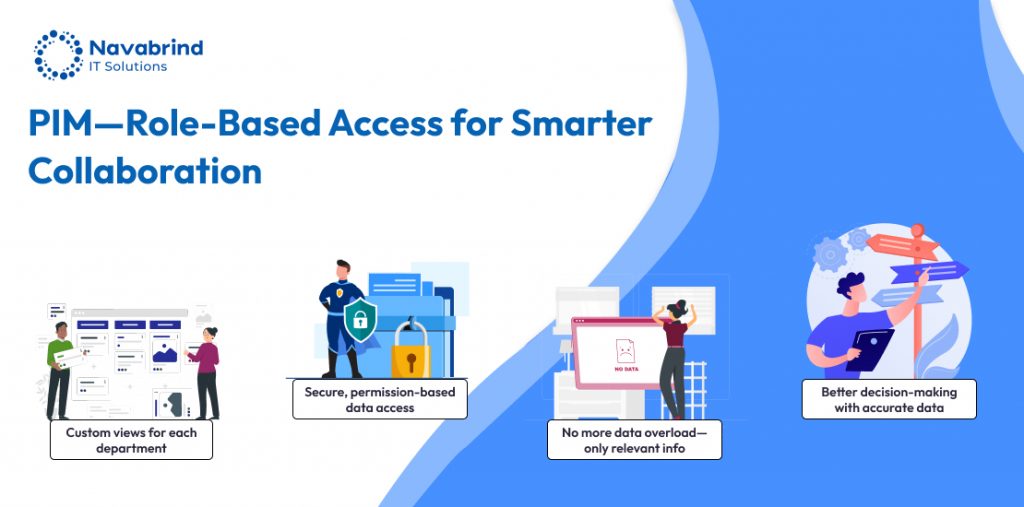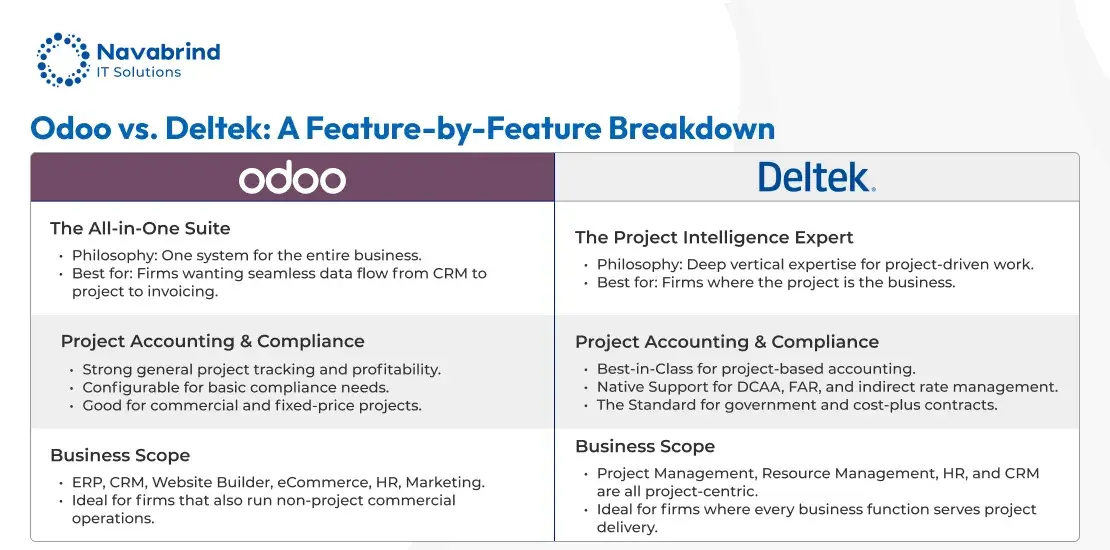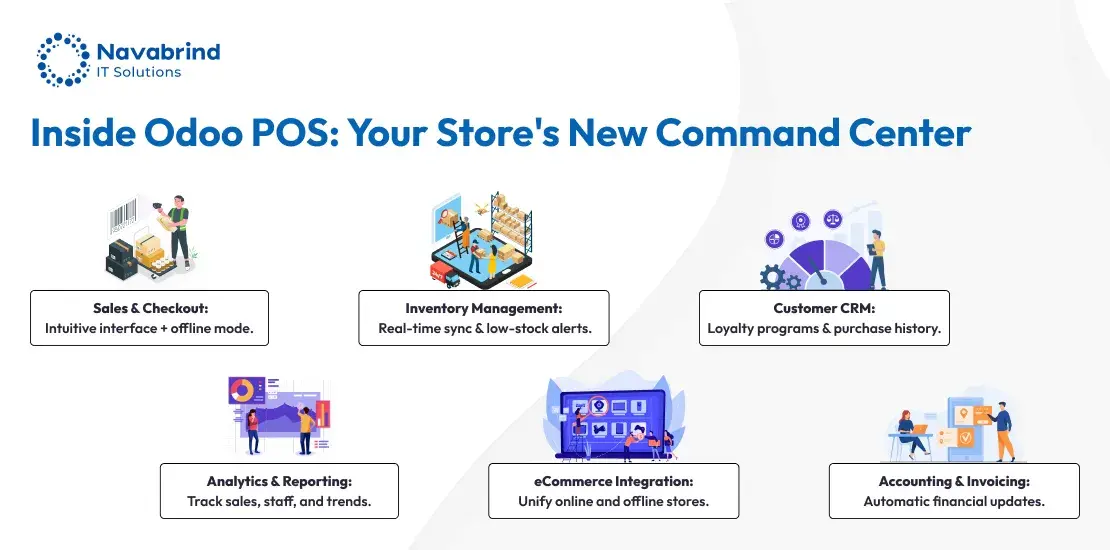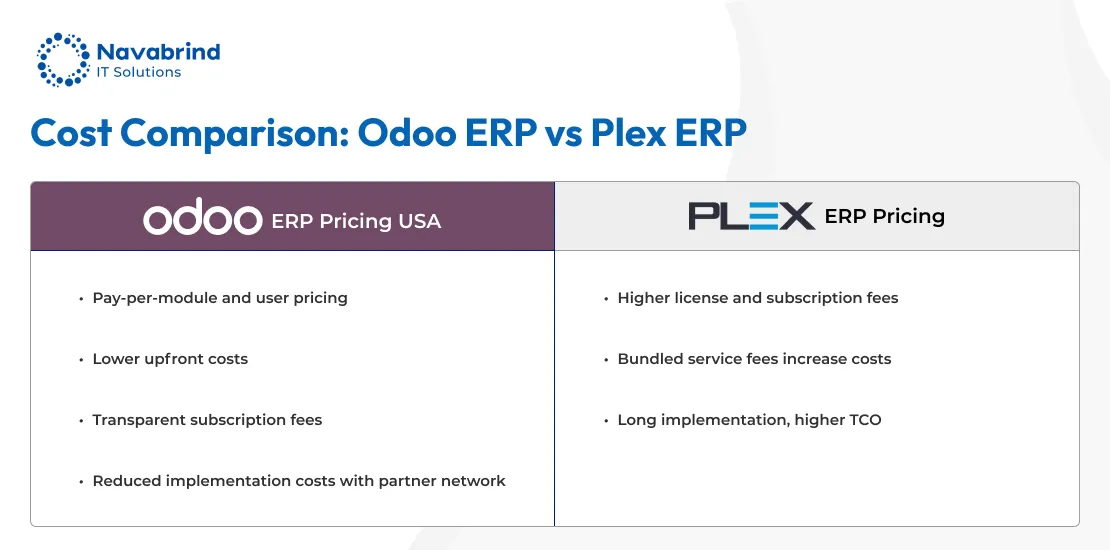5 Ways PIM-Odoo ERP Integration Enhances Product Data Accessibility Across Teams and Channels
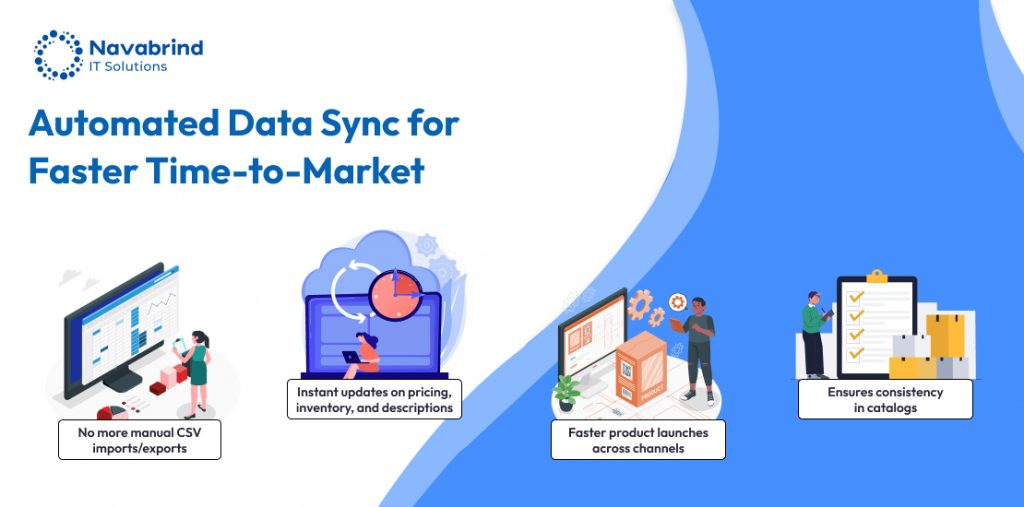
In today’s omnichannel landscape, product data fragmentation is an underestimated barrier to operational efficiency. As businesses expand across marketplaces, D2C platforms, B2B portals, and retail partners, maintaining consistency in product specifications, pricing, descriptions, and digital assets becomes increasingly complex. This fragmentation not only causes internal inefficiencies but also erodes customer trust when inconsistencies appear across channels.
Data accessibility has become a cornerstone for modern enterprisesnot just for efficiency, but for collaboration, speed to market, and exceptional customer experience. When product data is locked in silos, marketing teams struggle to launch campaigns, sales teams work with outdated specs, and operations falter with inaccurate inventory or packaging details. That’s where PIM for team collaboration and Odoo’s data accessibility features can radically transform your internal workflows.
Odoo ERP, known for its modular, scalable architecture, manages key business functions from procurement and inventory to sales and CRM. When integrated with a robust Product Information Management (PIM) system, it becomes more than an ERP—it evolves into a central nervous system for product data. This integration facilitates real-time product data updates in Odoo, enabling information flow across departments and digital channels.
The result? A powerful ecosystem that enables cross-departmental data sharing, supports real-time collaboration, and fuels seamless omnichannel distribution through Odoo PIM integration. In this blog post, we’ll explore five strategic ways this integration enhances product data accessibility.
1.Unified Source of Product Truth
As omnichannel commerce gets more pervasive, a critical yet overlooked challenge facing modern enterprises is the lack of a single source of truth for product data. From marketing and sales to logistics and customer support, every department interacts with product information in a different way—leading to fragmentation, inconsistency, and operational inefficiencies. This is where the synergy between Product Information Management (PIM) systems and Odoo ERP transforms from a technical integration into a strategic business advantage.
When PIM is tightly integrated with Odoo, it enables centralized product data management—a unified foundation that all teams across the organization can rely on. Rather than departments maintaining their own versions of product specs, pricing, descriptions, digital assets, or SKU attributes, PIM becomes the authoritative repository, syncing real-time updates directly into Odoo ERP. The result? Everyone—from product development to sales—works from the same, accurate, and current dataset, driving alignment and accelerating decision-making.
This centralized data model also eliminates one of the biggest sources of operational drag: duplication and rework. When teams use disparate tools or manual spreadsheets, inconsistencies are inevitable, leading to confusion, order errors, and lost time. With Odoo’s data accessibility features and PIM in place, these risks are significantly reduced. Updates made in the PIM system—such as new product launches, specification changes, or regional pricing variations—are instantly reflected across all integrated Odoo modules, including eCommerce, CRM, inventory, procurement, and beyond.
Moreover, the integration empowers PIM for team collaboration by enabling each department to contribute to and consume product data in a structured, governed way. Marketing can enrich product pages with multimedia content, while the logistics team can validate weights and dimensions for optimized packaging and shipping. Finance can align on pricing strategies, and customer service can access up-to-date product information to support customer inquiries. The implementation of cross-departmental data sharing tools breaks down silos and ensures business units work in concert rather than in isolation.
Perhaps most critically, this unified source of truth supports seamless omnichannel distribution. With Odoo PIM integration, product data flows smoothly to every sales channel—whether it’s a B2B portal, D2C storefront, online marketplace, or brick-and-mortar POS system. Customers get consistent, accurate product experiences, and your brand builds trust and efficiency at every touchpoint. In an environment where speed, accuracy, and scale are non-negotiable, this level of integration isn’t just beneficial—it’s business-critical.
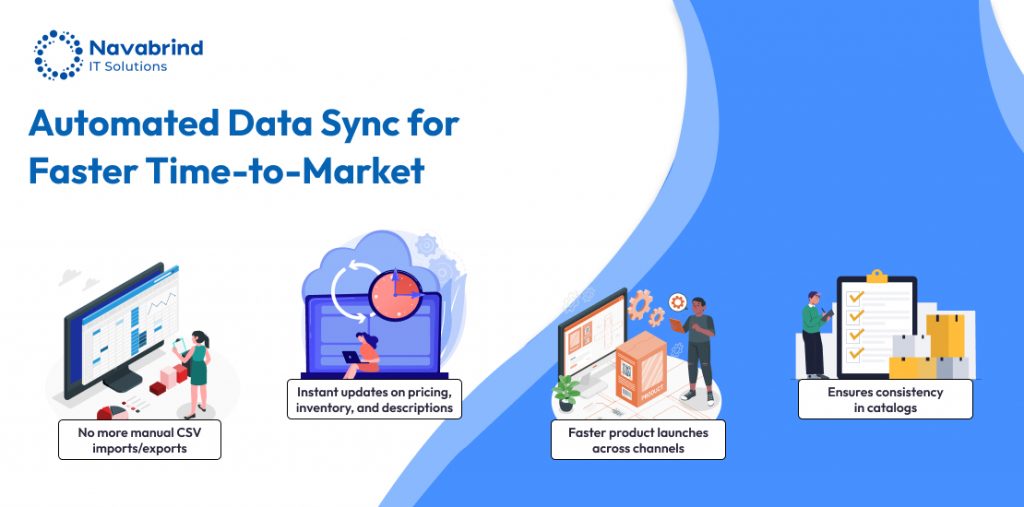
2.Real-Time Data Availability Across Departments
For growing businesses managing complex product catalogs, the difference between thriving and merely surviving often hinges on data agility—how quickly and accurately teams can access, share, and act on product information. In today’s dynamic market, where customer expectations, compliance standards, and competitive pressures shift rapidly, traditional methods of managing product data simply don’t cut it. This is where the integration of Product Information Management (PIM) with Odoo ERP delivers a crucial advantage through real-time data availability across departments.
With PIM tightly coupled with Odoo, updates made in the product database automatically ripple across every function—sales, marketing, operations, and support—throughout the organization. This automated syncing mechanism ensures that there’s no lag, misalignment, or manual intervention required for teams to work with the latest product specs, prices, descriptions, or compliance tags. It represents a shift from isolated, reactive workflows to collaborative, proactive operations, powered by Odoo data accessibility features.
Consider a typical use case: a product team updates the specifications of a newly launched furniture line to reflect changes in dimensions and available finishes. Traditionally, this update might take days or weeks to reach the CRM, e-commerce storefront, and inventory systems, leading to miscommunication, order errors, or customer dissatisfaction. But with real-time product data updates in Odoo, this new information is immediately available to every relevant touchpoint. Sales reps see it in their CRM, warehouse staff get the updated specs in the inventory module, marketing can reflect the changes in product pages and digital campaigns, and support agents can access accurate product info for customer queries—all without any delay.
This cross-functional flow is enabled by cross-departmental data sharing tools built into the PIM-Odoo integration. Each team gets a customized view of the data relevant to their function while pulling from a unified source, fostering PIM for team collaboration without compromising data integrity or governance. The result is a business that reacts faster to changing market conditions, minimizes internal friction, and delivers a more cohesive experience to customers across every channel.
More importantly, Odoo PIM for seamless omnichannel distribution ensures that this consistency extends beyond the walls of your organization. Whether your customer shops on your website, browses through a distributor’s portal, or consults a sales representative, they receive the same accurate, up-to-date product information—enhancing trust, satisfaction, and loyalty.
3. Multi-Channel Consistency with Fewer Errors
Customers expect a hyper-connected experience while the sales team struggles to cope with a fragmented sales ecosystem. Product data inconsistency is a silent yet damaging challenge businesses face. From web stores and mobile apps to online marketplaces and printed catalogs, even a slight mismatch in product details—be it dimensions, materials, or pricing—can lead to lost sales, customer dissatisfaction, or logistical chaos. For companies that operate across multiple channels, maintaining accurate, consistent, and up-to-date product data is no longer optional—it’s mission-critical.
This is where the integration of a Product Information Management (PIM) system with Odoo ERP transforms operations. A single update made in the PIM reflects instantly across all integrated digital platforms—your Shopify or Magento storefront, Amazon marketplace listings, product catalogs, internal CRM tools, and warehouse systems—through Odoo data accessibility features and robust automation. This centralization ensures that your business maintains multi-channel consistency without the heavy operational burden of manual updates or re-entry.
Consider the impact of this seamless data propagation. A product’s updated material specification, uploaded once to the PIM, syncs automatically across the Odoo ERP system. The update flows through to your customer-facing e-commerce platform, back-office inventory systems, and marketing teams’ content libraries. There’s no need for emails, follow-ups, or reconciliation—because everyone, and every channel, is working from the same, unified product data set. This reduces the chances of outdated specs showing up on a website, incorrect descriptions being printed in catalogs, or sales reps quoting legacy prices—issues that often erode brand trust, trigger customer complaints, and drive up product returns.
The strength of this approach lies not only in automation but also in enabling PIM for team collaboration and cross-departmental data sharing tools. When marketing teams know they can trust the accuracy of product descriptions, or when sales teams have immediate access to newly launched SKUs, they can move faster, with more confidence. The burden of firefighting incorrect data downstream disappears, freeing up teams to focus on value creation, not error correction.
From a customer standpoint, this level of real-time product data updates in Odoo enhances satisfaction by ensuring that what they see online, hear from your support team, or read in brochures is always consistent and correct. And with Odoo PIM for seamless omnichannel distribution, you create not just a single source of truth internally—but a coherent, reliable brand experience externally, across all touchpoints. This is how businesses build loyalty, reduce operational friction, and stay competitive in a rapidly evolving digital commerce landscape.
4. Faster Time-to-Market Through Streamlined Team Collaboration
The speed at which your business can introduce new products or update existing ones is a direct competitive advantage. Whether it’s a seasonal launch, a rebranded SKU, or a compliance-driven update, your ability to coordinate across departments determines how quickly the product reaches the customer. However, without a unified system, each team—sales, marketing, product development, operations—may be working with different versions of product data, slowing progress and increasing the risk of errors.
This is where integrating PIM for team collaboration with Odoo ERP software becomes transformative. The PIM acts as a centralized repository for all product-related information—titles, descriptions, technical specifications, images, regulatory documentation—and syncs seamlessly with Odoo. The result is a connected environment where real-time updates are accessible across departments. When product data is updated in the PIM, Odoo data accessibility features ensure that the same update is immediately available in relevant modules—CRM, Inventory, Sales, Purchase, and eCommerce—eliminating the lag and miscommunication that traditionally slows down product rollouts.
Let’s take a practical scenario: Your product team updates the dimensions of a packaging component to meet new shipping guidelines. This change is entered into the PIM and, through real-time product data updates Odoo, becomes instantly available to your warehouse team (for picking and storage changes), your sales team (to update spec sheets), and your eCommerce platforms (to reflect accurate shipping costs). No emails. No duplicated tasks. Just synchronized progress.
This kind of cross-departmental data sharing tool doesn’t just eliminate delays—it fosters proactive collaboration. Marketing teams can launch campaigns with confidence, knowing the specs they’re publishing are correct. Sales teams can respond faster to customer inquiries. Customer support can provide accurate information without toggling between outdated spreadsheets. Most importantly, your business reduces time-to-market while improving data integrity.
By leveraging Odoo PIM for seamless omnichannel distribution, product data is not only shared instantly across your internal teams but also published consistently across customer-facing platforms. This operational harmony accelerates execution and enables your brand to move in unison, delivering better, faster, and more consistent experiences—wherever your customers engage with you.
Improved Decision-Making with Complete Product Visibility
In a channel-diverse marketplace, informed decision-making is more than a strategic advantage—it’s a business imperative. For manufacturers and retailers managing complex product portfolios, disjointed or incomplete product information can lead to costly missteps. Whether you’re launching a new SKU, adapting to seasonal demand, or phasing out underperforming products, decisions must be backed by data that is current, accurate, and accessible across the organization.
This is where the integration of Product Information Management (PIM) with Odoo ERP software plays a transformative role. By centralizing product data in the PIM and synchronizing it across departments using Odoo data accessibility features, businesses eliminate silos and create a single source of truth. These clean, structured data sets become the foundation for actionable insights, accessed through Odoo’s powerful dashboards and reporting tools. With real-time product data updates Odoo, stakeholders no longer rely on outdated spreadsheets or inconsistent documentation—instead, they make decisions based on live, synchronized information.
For instance, marketing can use analytics to determine which product variants resonate most on digital channels; procurement can plan sourcing based on sales velocity and inventory levels; and sales teams can identify which product combinations convert best in specific geographies or customer segments. All of this is possible because the cross-departmental data sharing tools offered by Odoo ensure everyone is working from the same, consistent product dataset—whether it’s pricing, specifications, stock availability, or promotional assets.
The integration of Odoo PIM for seamless omnichannel distribution ensures that the data feeding into your analytics includes inputs from all customer touchpoints—eCommerce platforms, marketplaces, brick-and-mortar stores, and B2B portals. This unified visibility helps in identifying trends, planning promotions, and optimizing the product lifecycle. It also enables more accurate forecasting, allowing teams to anticipate demand spikes and mitigate risks like overstocking or missed sales opportunities.
When every decision-maker in your business is supported by reliable, real-time product data, you create a culture of agility and confidence. The result? Faster, smarter, and more coordinated actions that drive growth and customer satisfaction.
E-commerce businesses exploring a PIM system should seriously consider the PIM solution offered by Navabrind IT Solutions. Built from the group up to integrate with any ERP, function as a standalone product or integrate with your front end, it seamlessly integrates, and allows for deep customization. Unlike standalone PIM tools that require complex connectors, Navabrind PIM functions as a native extension of your ERP and e-commerce ecosystem, ensuring real-time product data updates, centralized control, and cross-departmental data sharing. Navabrind IT Solutions brings years of experience in implementing PIM for team collaboration, optimizing multi-channel distribution, and tailoring the system to specific catalog structures and business workflows. Our expertise ensures that businesses not only manage product data more efficiently but also unlock the full potential of Odoo’s data accessibility features to drive faster launches, reduce data duplication, and create consistent brand experiences across channels.
Frequently Asked Questions
Q1. What is PIM in Odoo ERP, and how does it improve product data accessibility?
Product Information Management (PIM) integrated with Odoo is a centralized solution designed to manage, enrich, and organize product-related data efficiently. By integrating PIM with Odoo, businesses can streamline their product data management and make information readily accessible across all departments and sales channels.
- Odoo Data Accessibility Features: PIM centralizes product data, such as descriptions, attributes, pricing, and images, into a single platform. This ensures that all teams—from sales to marketing—can access accurate and up-to-date product information in real time.
- Real-Time Product Data Updates in Odoo: Any updates made in the PIM system are instantly reflected in Odoo, ensuring that sales channels and teams always have the most current product details.
- PIM for Team Collaboration: Centralized access reduces silos, allowing cross-functional teams to work more effectively with shared, reliable product data.
By improving product data accessibility, Navabrind PIM with Odoo enhances operational efficiency, minimizes errors, and enables faster decision-making.
Q2. How does Navabrind PIM-Odoo integration benefit cross-functional teams?
Navabrind PIM-Odoo integration plays a pivotal role in enabling collaboration across departments by offering centralized data and tools that streamline communication and workflows.
- PIM for Team Collaboration: Teams like sales, marketing, procurement, and inventory can work cohesively with shared product data that is consistent and reliable.
- Cross-Departmental Data Sharing Tools: Odoo’s modules, combined with PIM, facilitate seamless sharing of product information, ensuring that every department operates with the same data set.
- How PIM with Odoo Simplifies Data Sharing Between Teams: For example, marketing teams can enrich product descriptions in PIM, and these updates automatically reflect in Odoo’s e-commerce or sales channels, giving sales teams the most recent information to share with customers.
- Real-Time Updates for Efficiency: Any changes in product attributes or pricing are synchronized instantly, reducing miscommunication and enabling teams to act quickly.
This integration fosters collaboration, improves productivity, and ensures a unified approach to managing product-related tasks.
Q3. Can Navabrind PIM-Odoo integration help manage product data for multiple sales channels?
Yes, Navabrind PIM-Odoo integration is specifically designed to manage product data across multiple sales channels effectively, ensuring consistency and efficiency.
- Odoo PIM for Seamless Omnichannel Distribution: PIM consolidates product information, which Odoo distributes to various channels such as online stores, marketplaces, and retail locations.
- Real-Time Product Data Updates in Odoo: Changes made in PIM, such as updated pricing or descriptions, are automatically synchronized across all connected sales channels through Odoo.
- Dynamic Channel-Specific Attributes: PIM enables businesses to create channel-specific variations of product data (e.g., different pricing for marketplaces vs. in-store) while Odoo ensures accurate distribution.
- Error-Free Data Management: Integration reduces the risk of inconsistent or outdated information being displayed across platforms, ensuring a seamless omnichannel experience.
This capability is invaluable for businesses looking to scale their multi-channel strategies without compromising data quality.
Q4. What types of product data can be managed with Navabrind PIM-Odoo?
Navabrind PIM-Odoo integration provides robust capabilities to manage a wide array of product data, making it suitable for businesses with diverse and complex catalogs.
- Core Product Information: Names, SKUs, categories, and pricing details are managed in PIM and synced with Odoo’s inventory and sales modules.
- Attributes and Variations: PIM handles dynamic product attributes, such as size, color, or material, which Odoo uses for effective categorization and inventory management.
- Media Content: High-resolution images, videos, and technical documents are centralized in PIM and shared seamlessly with Odoo’s e-commerce and marketing modules.
- Localized Data: Multi-language product descriptions and region-specific details are managed in PIM and distributed through Odoo for global operations.
- Complex Data Structures: PIM can organize and manage hierarchical data or bundles, which Odoo translates into user-friendly catalogs.
This comprehensive product data management ensures businesses can efficiently handle even the most intricate product catalogs.
Q5. How does Navabrind PIM-Odoo ensure product data consistency?
Product data consistency is one of the core strengths of Navabrind PIM-Odoo integration, as it eliminates redundancies and ensures uniformity across all platforms and departments.
- Centralized Data Management: PIM acts as a single source of truth for product data, and Odoo ensures this data is uniformly applied across all modules and sales channels.
- Automated Updates: Real-time product data updates in Odoo ensure that any changes made in PIM are instantly reflected everywhere, reducing errors caused by manual updates.
- Streamline Product Data Odoo: With synchronized systems, product data remains consistent across inventory, e-commerce, and customer touchpoints.
- Validation Mechanisms: PIM often includes tools to validate data, ensuring it meets predefined standards before being synced with Odoo.
- Error Reduction in Omnichannel Sales: Consistency in product data minimizes the risk of discrepancies, enhancing the customer experience and boosting operational efficiency.
This integration ensures that customers and teams interact with reliable, up-to-date product information.
Q6. Is Navabrind PIM-Odoo suitable for businesses with large product catalogs?
Yes, Navabrind PIM-Odoo integration is highly suitable for businesses managing large and complex product catalogs, providing tools to streamline operations and improve efficiency.
- Dynamic Catalog Management: PIM can handle thousands of SKUs with varying attributes, which Odoo organizes into manageable inventories and listings.
- Odoo PIM for Seamless Omnichannel Distribution: Integration ensures that product data is accurately distributed across all channels, regardless of the catalog’s size.
- Scalability for Growth: As businesses expand their product offerings, PIM-Odoo can scale to accommodate increasing data complexity.
- Efficient Bulk Updates: Odoo supports bulk updates for pricing, attributes, or inventory levels, with PIM providing the source data for these changes.
- Improved Customer Experience: Even with large catalogs, customers receive consistent and accurate product information, enhancing satisfaction and trust.
For businesses with extensive catalogs, this integration simplifies data management, reduces operational challenges, and supports growth.
Schedule a conversation with us now!
Related Articles
-
Post
Odoo ERP vs. Deltek – Which ERP Fits Your Architecture, Engineering, Construction, or Consulting Firm?
Odoo ERP vs. Deltek – Which ERP Fits Your Architecture, Engineering, Construction, or Consulting Firm? December 11, 2025 Posted by: Tony Category: Odoo ERP vs Deltek No Comments Why Architecture, Engineering, Construction (AEC), and Consulting Industries Need ERP Systems ERP systems have become indispensable tools for Architecture, Engineering, Construction, and Consulting firms, which handle multi-faceted -
Post
Streamline Your Store: A Deep Dive into the Odoo Point of Sale System
Streamline Your Store: A Deep Dive into the Odoo Point of Sale System December 5, 2025 Posted by: Tony Category: Uncategorized No Comments The Heart of the Modern Retail Experience Picture this: a customer walks into your store, finds what she is looking for and is ready to buy. Your online store just received five -
Post
Odoo ERP vs Plex ERP: Which Open Source Powerhouse Will Transform US Manufacturing
Odoo ERP vs Plex ERP: Which Open Source Powerhouse Will Transform US Manufacturing November 27, 2025 Posted by: Tony Category: Uncategorized No Comments As demand for cost-effective ERP solutions in the USA increases, businesses are turning to the best open source ERP software, Odoo ERP USA, for a flexible, scalable, and affordable approach to digital
How can we help you?
Get in touch with a solutions consultant that can share best practices and help solve specific challenges.






